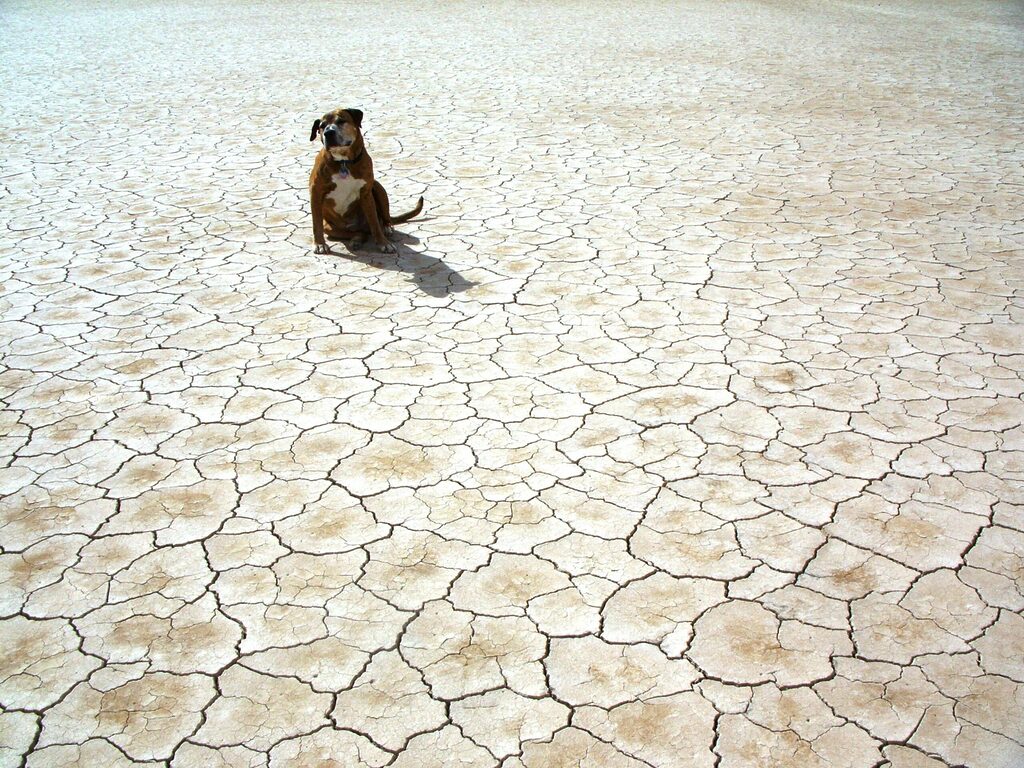Top 10 Dog Breeds That Thrive In Desert Climates: A Complete Guide For Desert Pet Parents

Living in a desert environment presents unique challenges for pet ownership. However, choosing the right dog breed can make all the difference between a struggling pet and a thriving companion. This comprehensive guide explores the top 10 dog breeds that naturally excel in hot, arid climates.
Table of contents
- Understanding Desert Climate Challenges for Your Dog
- Key Characteristics of Desert-Adapted Dog Breeds
- Top 10 Desert Dog Breeds
- Essential Desert Dog Care Tips
- Dog Health Monitoring in Desert Climates
- Choosing the Right Desert Dog for Your Lifestyle
- Conclusion
- Frequently Asked Questions
- Q: Can any dog adapt to desert living with proper care?
- Q: How much more water do desert dogs need?
- Q: What temperature is too hot for desert dogs to exercise?
- Q: Are hairless breeds always better for desert climates?
- Q: How can I tell if my dog is overheating?
- Q: Should I shave my long-haired dog for desert weather?
- Q: What’s the best time of day to walk desert dogs?
- Q: Can desert dogs live comfortably without air conditioning?
- Q: How often should I check my desert dog’s paws?
- Q: What emergency supplies should desert dog owners keep on hand?
Understanding Desert Climate Challenges for Your Dog
Desert environments create specific physiological demands on our canine companions. The combination of extreme heat, low humidity, and intense sun exposure requires dogs with specialized adaptations.
Temperature regulation becomes the primary concern. Unlike humans, dogs cannot sweat through their skin. Instead, they rely on panting and limited sweating through their paw pads to cool down, as explained by the American Veterinary Medical Association.
Water conservation is equally critical. Desert-adapted breeds have evolved efficient kidney function and reduced water loss mechanisms, according to research published by VCA Animal Hospitals.
Sun protection matters significantly. Dogs with light-colored or thin coats face increased risk of sunburn and skin cancer in desert conditions, as documented by the American Kennel Club’s health guidelines.
Key Characteristics of Desert-Adapted Dog Breeds
Physical Adaptations
Desert-suitable breeds typically share several physical characteristics. Short, dense coats provide insulation without trapping excessive heat. Light-colored fur reflects sunlight more effectively than dark colors.
Lean body structures facilitate better heat dissipation. Compact builds reduce surface area exposed to direct sunlight.
Large, upright ears promote air circulation and heat release. Many desert breeds have developed this distinctive ear shape over generations.
Behavioral Traits
Desert-adapted dogs often exhibit specific behavioral patterns. They naturally seek shade during peak heat hours. Many prefer dawn and dusk activity periods.
Lower energy requirements help conserve water and reduce heat generation. These breeds typically adapt well to indoor living during extreme weather.
Physiological Advantages
Enhanced kidney efficiency allows better water conservation. Improved heat tolerance mechanisms include efficient panting and blood vessel dilation.
Some breeds have developed specialized nasal structures that pre-cool incoming air before it reaches the lungs.
Top 10 Desert Dog Breeds
1. Basenji Dog
The Basenji, often called the “barkless dog,” originates from Central Africa’s hot, arid regions. This breed has evolved over thousands of years to thrive in challenging desert conditions, as documented by the Basenji Club of America.
Physical Characteristics:
- Weight: 22-26 pounds
- Height: 16-17 inches
- Coat: Short, fine, and glossy
- Colors: Red, black, tricolor, or brindle with white markings
Desert Adaptations: The Basenji’s short coat provides minimal insulation while protecting against UV rays. Their compact size reduces heat absorption. Large, erect ears facilitate excellent air circulation, characteristics that have been studied extensively by canine thermal regulation researchers.
Temperament: Basenjis are intelligent, independent, and alert. They require moderate exercise and adapt well to indoor living during extreme heat.
Care Requirements: Provide fresh water constantly. Exercise during cooler morning and evening hours. Offer plenty of shade and air conditioning access.
2. Greyhound Dog
Surprisingly, Greyhounds excel in desert climates despite their racing heritage. Their lean build and efficient cooling systems make them ideal desert companions.
Physical Characteristics:
- Weight: 60-88 pounds
- Height: 27-30 inches
- Coat: Short, smooth, and thin
- Colors: Various including fawn, brindle, and white
Desert Adaptations: Greyhounds have minimal body fat and large surface area for heat dissipation. Their thin coat prevents overheating while providing basic protection.
Temperament: Despite their athletic appearance, Greyhounds are surprisingly calm and low-energy. They enjoy short bursts of activity followed by long rest periods.
Care Requirements: Provide sunscreen for exposed skin areas. Create comfortable indoor resting spaces. Limit exercise to cooler parts of the day.
3. Pharaoh Hound Dog
The Pharaoh Hound, Malta’s national dog, has ancient origins in hot Mediterranean climates. This breed demonstrates remarkable heat tolerance and desert adaptability.
Physical Characteristics:
- Weight: 45-55 pounds
- Height: 21-25 inches
- Coat: Short, glossy, and fine
- Colors: Rich tan to chestnut with white markings
Desert Adaptations: Their large, erect ears provide excellent cooling. The short coat offers protection without heat retention. Lean muscle structure promotes efficient heat dissipation.
Temperament: Pharaoh Hounds are intelligent, friendly, and adaptable. They show remarkable heat tolerance while maintaining playful energy levels.
Care Requirements: Ensure adequate hydration during hot weather. Provide elevated sleeping areas for better air circulation. Exercise during dawn and dusk hours.
4. Ibizan Hound Dog
Originating from Spain’s Balearic Islands, Ibizan Hounds have adapted to hot, dry Mediterranean conditions over centuries.
Physical Characteristics:
- Weight: 45-65 pounds
- Height: 22-28 inches
- Coat: Short or wire-haired, both weather-resistant
- Colors: White, red, or combination
Desert Adaptations: Large, prominent ears facilitate heat release. Athletic build promotes efficient cooling. Weather-resistant coat provides protection without overheating.
Temperament: Ibizan Hounds are calm, gentle, and even-tempered. They adapt well to indoor living while maintaining outdoor activity enjoyment.
Care Requirements: Monitor for signs of overheating during exercise. Provide constant water access. Create shaded outdoor areas for supervised play.
5. Whippet Dog
Whippets, often called “miniature Greyhounds,” share many desert-friendly characteristics with their larger cousins.
Physical Characteristics:
- Weight: 25-40 pounds
- Height: 18-22 inches
- Coat: Short, smooth, and close-lying
- Colors: Various patterns and colors
Desert Adaptations: Minimal body fat reduces heat retention. Large surface area relative to body mass promotes cooling. Short coat prevents overheating.
Temperament: Whippets are gentle, quiet, and low-maintenance. They prefer short exercise periods followed by extensive rest.
Care Requirements: Protect from sun exposure with clothing or sunscreen. Provide soft, cool resting areas. Limit outdoor activity during peak heat.
6. Italian Greyhound Dog
The smallest of the sighthound family, Italian Greyhounds combine desert adaptability with compact size.
Physical Characteristics:
- Weight: 7-14 pounds
- Height: 13-15 inches
- Coat: Short, glossy, and fine
- Colors: Various solid colors
Desert Adaptations: Small size reduces heat absorption. Thin coat prevents overheating. Efficient metabolism requires less energy and water.
Temperament: Italian Greyhounds are affectionate, alert, and playful. They adapt excellently to indoor living with minimal outdoor requirements.
Care Requirements: Monitor closely for dehydration due to small size. Provide climate-controlled indoor environment. Use protective clothing during sun exposure.
7. Saluki Dog
Known as the “Royal Dog of Egypt,” Salukis have thrived in Middle Eastern deserts for thousands of years.
Physical Characteristics:
- Weight: 35-70 pounds
- Height: 23-28 inches
- Coat: Smooth with feathering on ears, legs, and tail
- Colors: Various including cream, fawn, and red
Desert Adaptations: Feathered coat provides sun protection while allowing air circulation. Large, pendant ears facilitate cooling. Lean build promotes heat dissipation.
Temperament: Salukis are independent, gentle, and dignified. They require moderate exercise and prefer quiet environments.
Care Requirements: Brush regularly to prevent matting of feathered areas. Provide adequate shade during outdoor time. Exercise during cooler periods.
8. Afghan Hound Dog
Despite their long coat, Afghan Hounds originated in Afghanistan’s mountainous desert regions and show remarkable heat adaptation.
Physical Characteristics:
- Weight: 50-60 pounds
- Height: 25-27 inches
- Coat: Long, silky, and flowing
- Colors: Various including cream, red, and black
Desert Adaptations: The long coat actually provides insulation against both heat and cold. Large paws spread weight on sand. Independent nature suits desert survival.
Temperament: Afghan Hounds are aloof, dignified, and independent. They require patient training and consistent care routines.
Care Requirements: Regular grooming prevents matting and promotes air circulation. Provide cooling mats during hot weather. Ensure adequate water intake.
9. Azawakh Dog
This West African sighthound has evolved specifically for Sahel desert conditions, making them exceptional desert companions.
Physical Characteristics:
- Weight: 33-55 pounds
- Height: 23-29 inches
- Coat: Short, fine, and sparse
- Colors: Fawn, red, or brindle with white markings
Desert Adaptations: Extremely short coat provides minimal insulation. Long legs elevate body from hot ground. Efficient metabolism conserves water and energy.
Temperament: Azawakhs are loyal, independent, and alert. They form strong bonds with their families while remaining aloof with strangers.
Care Requirements: Protect from extreme sun exposure. Provide elevated resting areas. Monitor hydration levels carefully.
10. Xoloitzcuintli (Mexican Hairless Dog)
The Xolo, Mexico’s national dog, has adapted to hot, arid conditions throughout its 3,000-year history.
Physical Characteristics:
- Weight: 10-55 pounds (three size varieties)
- Height: 10-23 inches
- Coat: Hairless or coated variety
- Colors: Various including black, bronze, and gray
Desert Adaptations: Hairless variety eliminates coat-related overheating. Efficient skin-based cooling system. Compact build reduces heat absorption.
Temperament: Xolos are calm, loyal, and alert. They serve as excellent watchdogs while maintaining gentle family companionship.
Care Requirements: Apply sunscreen to exposed skin. Provide moisturizing care for hairless varieties. Monitor for overheating during exercise.

Essential Desert Dog Care Tips
Hydration Management
Water availability must be constant and abundant. Dogs in desert climates require 50-100% more water than those in temperate zones, according to veterinary hydration guidelines from PetMD.
Place multiple water bowls throughout your home and yard. Consider elevated bowls to encourage drinking, as recommended by canine nutrition experts.
Add water to dry food to increase moisture intake. Ice cubes can provide cooling relief and additional hydration.
Monitor urine color as a hydration indicator. Dark yellow indicates dehydration requiring immediate attention, as outlined in veterinary emergency protocols.
Exercise Modifications
Schedule exercise during dawn and dusk hours when temperatures are coolest. Avoid midday activities when ground temperatures exceed safe levels, as recommended by veterinary heat safety protocols.
Provide booties to protect paw pads from hot surfaces. Check pavement temperature with your hand before walks, following the 5-second rule established by veterinary behaviorists.
Create indoor exercise alternatives for extreme weather days. Puzzle toys and training sessions provide mental stimulation, as suggested by canine enrichment specialists.
Watch for signs of overheating including excessive panting, drooling, and lethargy, according to emergency veterinary guidelines.
Environmental Modifications
Install adequate air conditioning or cooling systems. Ceiling fans improve air circulation and comfort.
Create shaded outdoor areas using umbrellas, awnings, or shade cloth. Ensure shade moves with the sun throughout the day.
Use cooling mats, vests, or bandanas during hot weather. These products provide immediate temperature relief.
Consider kiddie pools for supervised cooling activities. Always supervise water play to prevent accidents.
Nutritional Considerations
Adjust feeding schedules to cooler parts of the day. Hot weather often reduces appetite naturally.
Provide high-quality, easily digestible food to reduce metabolic heat production. Avoid overfeeding which increases body temperature.
Consider frozen treats made from dog-safe ingredients. These provide cooling relief and nutritional value.
Monitor weight carefully as desert dogs may eat less during extreme heat periods.
Dog Health Monitoring in Desert Climates
Heat-Related Illnesses
Recognize early signs of heat exhaustion including excessive panting, weakness, and disorientation, as detailed by the American Animal Hospital Association.
Heat stroke symptoms include high body temperature, rapid heartbeat, and loss of consciousness. This requires immediate veterinary attention, according to emergency veterinary protocols.
Prevention remains the best treatment. Never leave dogs in vehicles or inadequately cooled areas, as emphasized by ASPCA safety guidelines.
Skin Protection
Desert sun causes sunburn and increases skin cancer risk. Apply dog-safe sunscreen to exposed areas, as recommended by veterinary dermatology specialists.
Monitor for skin changes including darkening, scaling, or unusual growths. Regular veterinary check-ups help identify problems early, according to canine cancer prevention guidelines.
Provide protective clothing for hairless or light-colored breeds during sun exposure, as advised by animal welfare organizations.
Paw Care
Hot surfaces cause burns and discomfort. Check paw pads regularly for signs of damage.
Use paw balm to maintain healthy pad condition. Consider protective booties for extended outdoor activities.
Rinse paws after walks to remove hot sand and debris.
Choosing the Right Desert Dog for Your Lifestyle
Activity Level Matching
Consider your exercise preferences and capabilities. Some desert breeds require more activity than others.
Sighthounds like Greyhounds need short bursts of intense exercise followed by rest periods.
Working breeds may need more consistent activity schedules adapted to desert conditions.
Space Requirements
Evaluate your living space and yard size. Some breeds adapt better to apartment living than others.
Provide adequate indoor space for exercise during extreme weather periods.
Consider breed size in relation to your cooling costs and capabilities.
Grooming Needs
Factor grooming requirements into your decision. Some breeds need minimal maintenance while others require regular care.
Professional grooming may be necessary for long-coated breeds to maintain proper coat condition.
Budget for grooming supplies and services appropriate for your chosen breed.
Conclusion
Selecting the right dog breed for desert living requires careful consideration of multiple factors. The ten breeds outlined in this guide have proven their ability to thrive in hot, arid conditions through generations of adaptation.
Remember that individual dogs within breeds may vary in their heat tolerance. Always prioritize your pet’s health and comfort over outdoor activities during extreme weather.
Proper care, adequate cooling, and vigilant monitoring enable successful desert dog ownership. With the right breed choice and appropriate care strategies, you can enjoy the companionship of a happy, healthy canine friend in even the most challenging desert environments.
The key to success lies in understanding your chosen breed’s specific needs and adapting your care routine accordingly. Whether you choose a sleek Greyhound or an ancient Saluki, your desert dog can live a comfortable, fulfilling life with proper preparation and care.
Frequently Asked Questions
Q: Can any dog adapt to desert living with proper care?
A: While proper care helps all dogs, some breeds are naturally better suited to desert climates due to evolutionary adaptations. Breeds with thick coats, short noses, or high energy requirements may struggle despite excellent care.
Q: How much more water do desert dogs need?
A: Desert dogs typically require 50-100% more water than dogs in temperate climates. Monitor your dog’s individual needs and provide constant access to fresh water.
Q: What temperature is too hot for desert dogs to exercise?
A: Generally, avoid exercise when ground temperatures exceed 125°F (52°C). Use the “hand test” – if you can’t hold your hand on the pavement for 5 seconds, it’s too hot for your dog’s paws.
Q: Are hairless breeds always better for desert climates?
A: Not necessarily. While hairless breeds avoid coat-related overheating, they require sun protection and may actually be more sensitive to extreme temperatures than short-coated breeds.
Q: How can I tell if my dog is overheating?
A: Signs include excessive panting, drooling, lethargy, vomiting, diarrhea, and loss of coordination. Severe cases may involve collapse or unconsciousness requiring immediate veterinary care.
Q: Should I shave my long-haired dog for desert weather?
A: Generally no. A dog’s coat provides insulation against both heat and cold. Shaving can actually increase heat absorption and sunburn risk. Consult your veterinarian for breed-specific advice.
Q: What’s the best time of day to walk desert dogs?
A: Early morning (before 8 AM) and late evening (after 6 PM) are typically safest. Avoid midday walks when temperatures and ground heat are highest.
Q: Can desert dogs live comfortably without air conditioning?
A: While some hardy breeds may survive, air conditioning significantly improves comfort and health. At minimum, provide fans, shade, and cooling aids during extreme heat.
Q: How often should I check my desert dog’s paws?
A: Daily paw checks are recommended during hot weather. Look for signs of burns, cuts, or embedded debris. Hot surfaces can cause immediate damage to sensitive paw pads.
Q: What emergency supplies should desert dog owners keep on hand?
A: Essential supplies include extra water, cooling mats, thermometer, first aid kit, sunscreen, booties, and your veterinarian’s emergency contact information. Know the signs of heat stroke and have a plan for immediate cooling and veterinary care.






